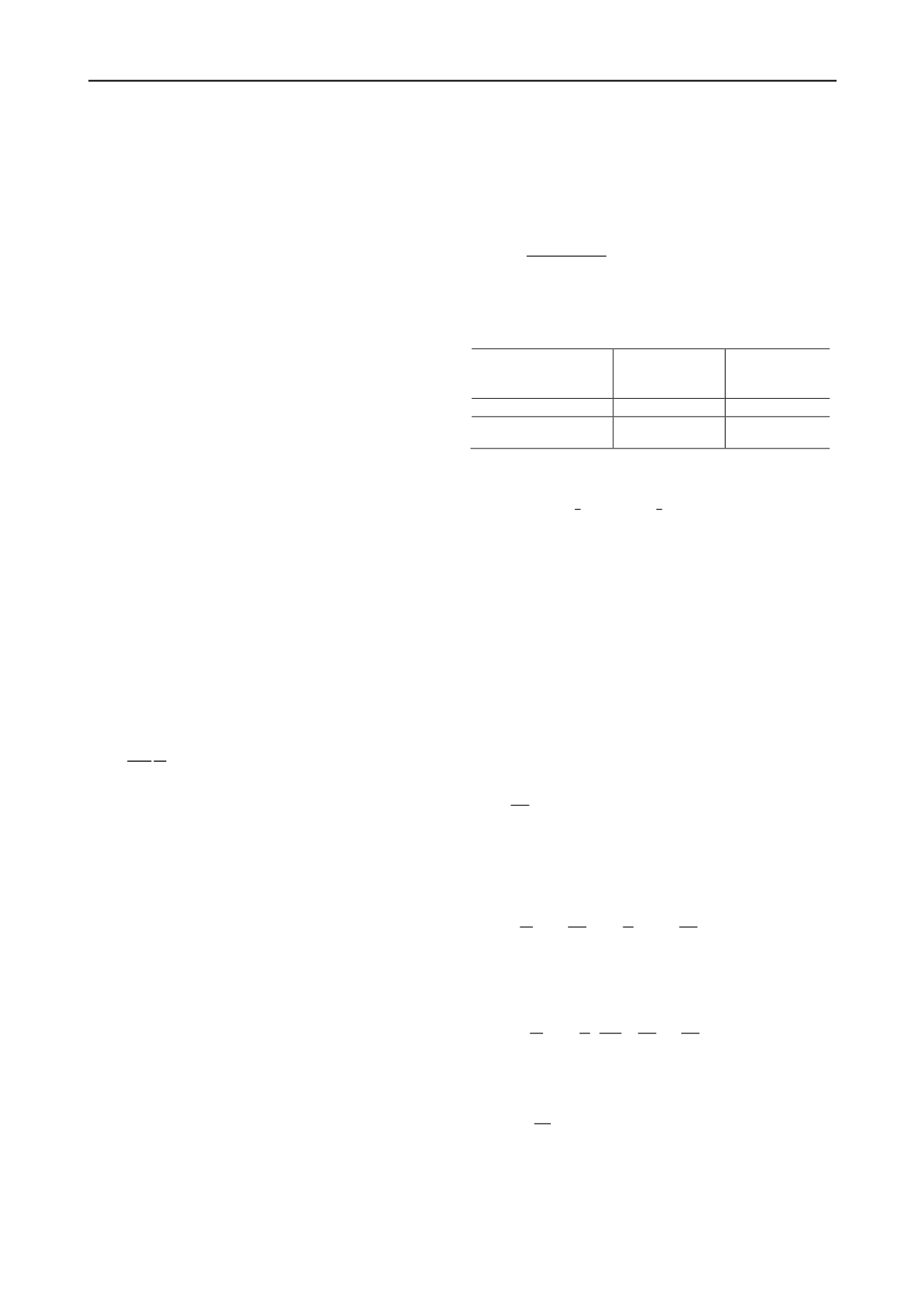
2768
Proceedings of the 18
th
International Conference on Soil Mechanics and Geotechnical Engineering, Paris 2013
2 THEORETICAL BACKGROUND
1.1
Fiber-optic Bragg Grating (FBG) sensors
FBG sensors inscribe stripe-like grating on the photosensitive
fiber optic core by exposing the latter to ultraviolet (UV)
radiation by periodically distributing the strength of the light.
Once formed, FBG sensors serve as reflectors that reflect light
with a pattern-specific wavelength. This reflected wavelength is
called the Bragg wavelength and is as in Equation (1). In other
words, when broad-spectrum light beams are transmitted to the
FBG, light with the Bragg wavelength is reflected and
remaining light with other wavelengths passes through.
= 2
Λ
(1)
where
is Bragg wavelength,
is the effective refractive
index of the fiber-optic core, and
is the interval of the grating
inscribed on the fiber-optic core.
Changes in strain and the temperature affect the effective
refractive index,
, and the grating period,
, so that the Bragg
wavelength comes to shift. In comparison with the initial Bragg
wavelength,
, the shifted amount of wavelength,
, is given
as
Δ/
= 1 −
+
+
Δ
(2)
where the first term of Eq. (2) is the amount shifted due to strain,
is the photoelatic constant, and
is the strain underwent by
the grating. The second term of Eq. (2) shows the shift of the
wavelength caused by the change of temperature,
is the
thermal expansion coefficient of the fiber optic, and
is the
thermo-optic coefficient of the fiber optic. Because the
experiments in the present study were conducted in a controlled
laboratory environment, changes in the temperatures of the
sensors themselves and their surroundings were negligible such
that
= 0
. Consequently, the second terms was eliminated so
that it is possible easily to calculate strain from the wavelength
shift as shown in Eq. (3).
=
(3)
where the photoelastic constant,
= 0.229, provided by the
manufacturer.
1.2
Integration by Gaussian quadrature
In numerical analysis, a quadrature rule is an approximation of
the definite integral of a function, usually stated as a weighted
sum of function values at specified points within the domain of
integration. An n-point Gaussian quadrature rule is a quadrature
rule constructed to yield an exact result for polynomials of
degree
2 − 1
or less by a suitable choice of the points
and
weights
for i = 1, …, n. The domain of integration for such a
rule is conventionally taken as [-1, 1], so the rule is stated as
≈ ∑
.
(4)
Gaussian quadrature as above will only produce accurate
results if the function
f(x)
is well approximated by a polynomial
function within the range between -1.0 and +1.0. If the
integrated function can be written as
=
,
where
is approximately polynomial, and
is known, then
there are alternative weight
′
such that
=
≈ ∑ ′
.
(5)
For the simplest integration problem, i.e. with
= 1
,
the associated polynomials are Legendre polynomials,
,
and the method is usually known as Gauss-Legendre quadrature.
With the nth polynomial normalized to give
1 = 1
, the i-th
Gauss node,
, is the i-th root of
. Its weight is given by
(Abramowitz and Stegun 1972)
=
[
]
(6)
A few order rules for solving the integration problem are listed
in Table 1.
Table 1. Position of Gauss points and corresponding weights.
Number of Gaussian
points,
n
gp
Location,
ξ
i
Weight,
w
i
1
0.0
2.0
2
±
0.57732502692
1.0
3
±
0.7745966692
0.0
0.555 555 5556
0.888 888 8889
An integral having arbitrary limits can be transformed so that
its limits are from -1 to +1. With
=
, and with the
substitution
=
1 −
+
1 +
,
=
≈ ∑ ′
.
(7)
Thus the integrand is changed from
=
to
=
,
where
incorporates the Jacobian of the transformation,
= / = 1/2
−
. If the function
=
is not a
polynomial, Gauss quadrature is inexact, but becomes more
accurate as more points are used.
1.3
The differential equations of the deflection for a
cantilever beam subjected to a point load
As shown in Figure 1, lateral displacement, y, which is
produced when pile heads are subjected to a lateral load, P, and
not to axial load, is expressed in terms of differential equation,
as in Equation (8).
= = −
(8)
where
E
is the Young’s modulus of the pile material,
I
is the
moment of inertia of the section area of the pile,
x
is the
distance from the pile end, and
M
is the sectional moment.
Integrating Eq. (8) yields the function of the slope,
S
, as
=
=
=
−
(9)
For the cantilever beam, the slope,
S
= /
, remains zero at
the clamped end (i.e.,
x
= 0). Integrating Equation (9) again
yields an expression of the lateral displacement,
y
, as
=
=
−
=
3 −
(10)
As a result, the maximum deflection, y
max
, occurs at the point of
the lateral load, given as
=
(11)
Note that two sequential integrations are necessary to obtain the
displacement function of Eq. (10) from the moment function of
Eq. (8).


